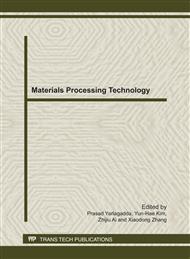p.289
p.294
p.300
p.307
p.313
p.319
p.323
p.328
p.332
A Numerical Method to Predict Packing Density of Aggregates in Concrete
Abstract:
It is nowadays very clear that the single most important parameter influencing the performance of concrete is the packing density of the aggregates. Among aggregate characteristics, grading of aggregates has the most significant effect on packing density (PD) of aggregates. In the current sstudy, packing density of five aggregates were measured by experimental tests and computer simulation base on discrete element method (DEM). Obtained results show that the performed computer simulation is very efficient method to predict packing density and optimization grading of aggregates.
Info:
Periodical:
Pages:
313-316
Citation:
Online since:
September 2011
Authors:
Keywords:
Price:
Сopyright:
© 2011 Trans Tech Publications Ltd. All Rights Reserved
Share:
Citation:


